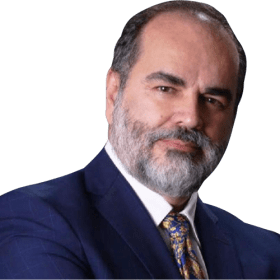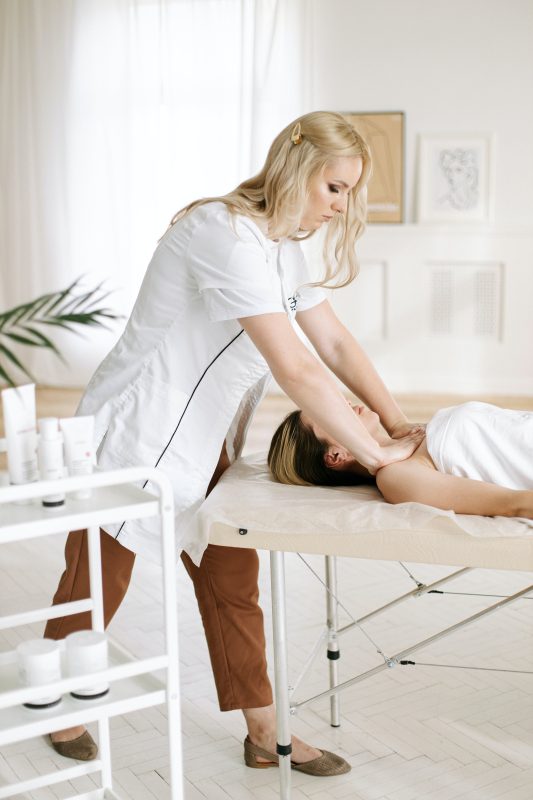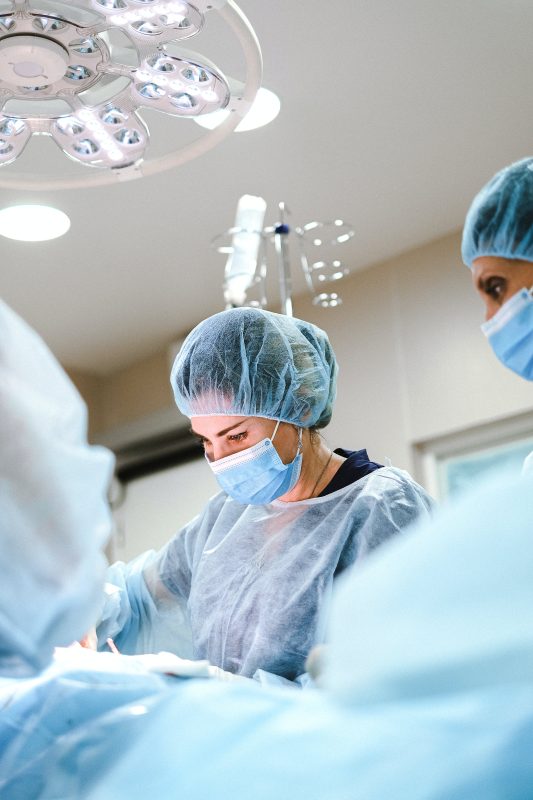Blog
The Importance of Post-Operative Lymphatic Drainage Massage for Plastic Surgery Recovery
Lymphatic Drainage Massage after Plastic Surgery
1. Introduction
1.1 Background
This article discusses the role of lymphatic drainage massage after plastic surgery.
Plastic surgery is becoming ever more popular recently as a way of improving one’s physical appearance. Perhaps fuelled by the use of social media, increasing numbers of people are deciding to have surgery.
Plastic surgery has become highly sophisticated and incorporates advanced surgical techniques and state-of-the-art technologies.
 1.2 Purpose and Scope
1.2 Purpose and Scope
For persons considering undergoing surgery, it’s important to be aware that achieving the desired outcome extends beyond the operating room. Post-operative care plays an essential role in shaping the final results. It’s here that postoperative lymphatic drainage massage is an important part of post-plastic surgery recovery.
In this article I will explain the significance of lymphatic drainage massage for plastic surgery recovery. I will talk about the physiology of the lymphatic system, the implications of surgical trauma, the mechanisms and techniques of lymphatic drainage massage and how effective it can be. I will also address safety considerations and discuss the potential future developments and innovations in the field of lymphatic drainage massage for post-plastic surgery outcomes.

“Lymphatic Drainage treatment is absolutely necessary for perfect healing and results!”
Professor Dr Múcio Porto, Consultant Plastic Surgeon
2. The Physiology of the Lymphatic System

2.1 Lymphatic Fluid and Circulation
The lymphatic system is an essential part of the human body. At its core is lymph, a clear, colourless fluid. Lymph originates from interstitial fluid, which serves as the nourishing medium for cells and tissues. As interstitial fluid accumulates metabolic waste, cell debris, and proteins, it transforms into lymph and enters the lymphatic system.
Lymphatic fluid travels along the network of lymphatic vessels, mirroring the layout of blood vessels. These vessels, capillaries, collecting vessels, and larger ducts, function to transport lymph. But unlike the circulatory system, where the heart propels blood throughout the body, lymph relies on skeletal muscle contractions, respiratory movements and changes in hydrostatic pressure to maintain its flow.
2.2 Lymphatic Vessels and Nodes
Lymphatic vessels form a web that extends throughout the body. These vessels operate together with lymph nodes within the system. Lymph nodes house immune cells—primarily lymphocytes and macrophages.
Lymph nodes play a very important role in the immune system. They act to check the lymph for the presence of foreign invaders, such as bacteria, viruses, and abnormal cells. When these threats are detected, lymph nodes initiate immune responses to neutralize them, contributing to the body’s defense against infections and diseases.

“Post-operative lymphatic drainage is a must, because it will help patients to recover more quickly. It also treats areas of localized edema, reducing swelling, relieving the pain and preventing fibrosis after procedures.The improvement in results and the recovery process is remarkable. Another advantage is the prevention of some post-operative complications such as underlying fibrous tissue. I highly recommend lymphatic drainage massage after plastic surgery.
Dr Claudia Machado, Plastic Surgeon
2.3 Role in Immunity
Beyond its fundamental role in fluid balance and waste removal, the lymphatic system works closely with the immune system. Lymph nodes start immune responses to safeguard the body against pathogens. This partnership between the lymphatic and immune systems underscores the lymphatic system’s essential role in overall health.
2.4 Lymphatic System’s Interaction with Other Systems
The lymphatic system does not work on its own but closely with other bodily systems. It interfaces with the circulatory system, facilitating the exchange of fluid and maintaining tissue health. In wound healing the lymphatic system contributes to tissue repair by clearing debris and delivering immune cells.
The lymphatic system also interacts closely with the immune system. Immune cells transported by lymph nodes are essential for detecting and responding to infections. So the lymphatic system serves as an essential conduit for immune surveillance and defense, emphasizing its critical role in overall well-being.

“Surgery is a traumatic act and it creates inflammation and swelling due to lymphatic fluid collection. Lymphatic drainage is essential to remove from the area swelling that slow down the healing process. I love the improvement that lymphatic drainage gives to my patients after a facelift, tummy tuck and liposuction”
Dr. Federico Di Francesco, M.D, Consultant Plastic Surgeon,
3. How does Plastic Surgery affect the Lymphatic System?
3.1 Surgical Trauma and Edema
Plastic surgery inevitably inflicts trauma upon the body. The process of surgically reshaping or enhancing tissues involves incisions, tissue manipulation, and usually the administration of anaesthesia. These actions start physiological responses, with swelling being one of the common consequences.
Swelling arises from the increased permeability of blood vessels in response to surgery. Fluid and proteins leak from blood vessels into the spaces surrounding cells and tissues. This fluid buildup can be large with noticeable swelling after surgery. For patients it can be very concerning, as it may affect the surgery outcome and extend the recovery period.
3.2 Inflammation and Fibrosis
Inflammation is another part of the body’s response to surgery. It is an orchestrated defence mechanism that starts the healing process. Following surgery, inflammation isolates and neutralises potential pathogens and initiates tissue repair.
However, when inflammation becomes excessive or prolonged the body’s response can extend beyond the requirements of healing, leading to the formation of fibrosis. Fibrosis is characterised by the excessive deposition of collagen that forms the basis of scar tissue. This is of course the last thing a patient undergoing plastic surgery wants.
3.3 Impact on Body Immunity
Plastic surgery procedures can significantly influence the immune system. The surgical process itself, as well as the subsequent inflammatory and reparative responses, may divert immune resources. As the immune system focuses on responding to the surgical trauma and healing, it may be less effective in responding to other potential threats.
Understanding these immune dynamics is essential for optimising patient outcomes and minimising risks.
3.4 Examples of Lymphatic System Response to Plastic Surgery
As examples, consider two common procedures: abdominoplasty (tummy tuck) and breast augmentation.
In tummy tuck, extensive manipulation of abdominal tissues can lead to significant swelling after surgery. The body’s natural response to this surgical trauma is the accumulation of fluid and swelling in the abdominal area. This swelling can be uncomfortable, slow down the healing process and potentially affect the aesthetic outcome.
Breast augmentation, another very common plastic surgery procedure, involves the placement of implants or fat grafts to enhance the size and shape of the breasts. This procedure can lead to trauma in the chest area. Surgical incisions and manipulation of breast tissues can potentially disrupt lymphatic vessels and nodes. This may temporarily affect lymphatic circulation, impacting the body’s ability to efficiently remove excess fluid and cellular debris from the surgical site.
These are examples of how surgical procedures can affect the lymphatic system, illustrating the challenges that patients may have after plastic surgery.
4. Lymphatic Drainage Massage After Plastic Surgery: Mechanism and Techniques

4.1 Technique Overview
Lymphatic drainage massage is a specialised technique based on an understanding of the lymphatic system’s anatomy and physiology. It optimises lymphatic circulation and helps the removal of excess fluid and waste products from tissues. Post-operative lymphatic drainage massage is a gentle, non-invasive massage which is suitable for individuals in various stages of post-plastic surgery recovery.
4.1.1. Gentle, Wave-like Movements
Post surgery lymphatic drainage consists of gentle strokes that mirror the natural flow of lymphatic fluid. These wave-like movements, executed by skilled therapists, encourage the contraction of small muscular units within lymphatic vessels responsible for propelling lymphatic fluid. In addition they also assist in directing lymph toward central lymph nodes, where it can be efficiently processed and filtered.
The gentleness of these movements is important. Unlike the deep tissue massage techniques commonly associated with traditional massages, lymphatic drainage massage employs a light touch. This minimizes the risk of damaging delicate lymphatic vessels or causing discomfort to the patient.
4.1.2. Sequential Progression
Therapists follow a specific path, typically starting near the body’s core and gradually progressing outward toward more distal areas. This sequence ensures that lymphatic fluid is directed toward central lymph nodes for optimal filtration and processing.
This sequential progression ensures that lymphatic drainage is efficient and effective. It also aligns with the natural flow of lymph, reinforcing the body’s own mechanisms for lymphatic circulation.
4.1.3. Manual Pressure
Lymphatic drainage massage uses very little force. The aim is to gently encourage the movement of lymphatic fluid. The light touch used during this massage technique is essential for several reasons:
- It prevents damage to fragile lymphatic vessels and nodes.
- It minimizes discomfort for patients, which is crucial during the postoperative recovery phase.
- It respects the healing process by avoiding undue pressure on surgical sites, incisions, or sensitive areas.
4.1.4. Continuous Flow
Lymphatic drainage massage is characterized by its continuous, uninterrupted flow. Therapists maintain a consistent rhythm throughout the session. This sustained flow complements the natural rhythm of the lymphatic system and supports the movement of lymphatic fluid toward central nodes.
4.2 Benefits of lymphatic drainage massage after plastic surgery
Lymphatic drainage massage offers many benefits for the recovery from plastic surgery:
4.2.1. Reduction of Swelling
One of the main objectives of lymphatic drainage massage is to reduce swelling after surgery. By gently encouraging the removal of excess fluid from tissues, the massage significantly alleviates swelling and discomfort. Reduced swelling not only contributes to the patient’s comfort but also facilitates a smoother and more efficient recovery process. of course, excessive swelling may also be a cause of patient anxiety.
4.2.2. Improved Circulation
Enhanced lymphatic circulation achieved by lymphatic drainage massage combines with improved blood flow to the surgical area. This ensures that oxygen and essential nutrients are efficiently delivered to the surgery site. Adequate circulation is required for tissue energy and plays an important role in minimising complications.
4.2.3. Inflammation Management
Lymphatic drainage massage can help to control excessive inflammation. It assists in controlling the body’s inflammatory response to ensure that it is balanced and proportionate to the healing process. By reducing inflammation, this massage helps to bring about a more comfortable and less complicated recovery experience.
4.2.4. Pain Management
After surgery the patient may experience some degree of pain and discomfort. Lymphatic drainage massage helps pain management by reducing pressure and fluid buildup. This reduction in pressure can translate into a decreased perception of pain, allowing patients to recover more comfortably.
4.2.5. Immune Support
As discussed above, the lymphatic system and the immune system work very closely together. By optimising lymph circulation, lymphatic drainage massage helps the body’s immunity. By reducing complications and supporting immune responses lymphatic drainage massage is advantageous during post-plastic surgery recovery.
4.3 Patient Experience: What to Expect During Post-Operative Lymphatic Drainage Massage
Patients considering or undergoing lymphatic drainage massage should be well-informed about what to anticipate after the surgery. A typical lymphatic drainage massage session follows a structured approach to ensure patient comfort and optimal results.
4.3.1 Patient Consultation
A consultation session between the patient and the therapist is the first step. During this consultation, the therapist assesses the patient’s specific needs, surgical history, and any other considerations. This assessment is essential for tailoring the massage technique to the patient’s individual requirements.
The therapist then provides an overview of the massage technique and answers any questions or concerns the patient may have. This open and transparent communication establishes trust and confidence between the patient and therapist, ensuring a positive experience.
During the massage itself, patients are typically positioned comfortably on a massage table. They may need to expose the area of the body being treated, such as the face, neck, arms, or legs. The therapist employs the gentle, rhythmic strokes characteristic of lymphatic drainage massage, following the prescribed sequence. Patients often describe the sensation as soothing and relaxing, with some even experiencing a sense of lightness as the massage progresses.
Effective communication between the patient and therapist is encouraged throughout the session. Patients should feel able to express their comfort level and any sensations they experience during the massage. The therapist can then adjust the pressure and technique to meet the patient’s needs and preferences.
4.3.2 Instructions for post-massage care
After the massage, the therapist may offer post-massage care instructions. These recommendations typically include staying adequately hydrated, avoiding strenuous physical activities for a specified period and monitoring the treated area.
The patient experience during lymphatic drainage massage is characterized by a sense of care, comfort, and attentiveness. Patients often report feeling immediate relief from swelling and discomfort following the session, contributing to an overall positive perception of their recovery process.

5. Clinical Evidence and Efficacy
5.1. Reduction in Swelling
The reduction of postoperative swelling is one of the main benefits of lymphatic drainage massage and it is supported by clinical evidence. Many studies have investigated the impact of this massage technique on the reduction of swelling in plastic surgery.
5.1.1. Studies and Findings
Research has demonstrated a marked reduction in swelling when lymphatic drainage massage is carried out after surgery. For example, a prospective clinical trial published in the “Aesthetic Surgery Journal” (2019) examined the effects of lymphatic drainage massage on patients undergoing liposuction. The study found that those who received regular lymphatic drainage massage sessions experienced significantly less swelling.
A study published in the “Journal of Plastic, Reconstructive & Aesthetic Surgery” (2018) explored the impact of lymphatic drainage massage on breast augmentation patients. The results revealed a substantial reduction in breast edema and discomfort in the group receiving lymphatic drainage massage.
5.1.2. Patient Testimonials
Patients consistently confirm the effectiveness of lymphatic drainage massage in reducing swelling and helping amore comfortable recovery. Many patients who have undergone plastic surgery report feeling lighter, less swollen and more at ease after receiving lymphatic drainage massage sessions.
5.2. Faster Recovery with lymphatic drainage after plastic surgery
An advantage of lymphatic drainage massage is its ability to speed up the recovery process for plastic surgery patients. This benefit is supported by both clinical research and patient testimonials.
5.2.1. Research on Recovery Times
Clinical studies have indicated that patients who receive lymphatic drainage massage tend to experience shorter recovery times. For example, a study published in the “Journal of Plastic, Reconstructive & Aesthetic Surgery” (2020) investigated the impact of lymphatic drainage massage on abdominoplasty patients. The study found that patients who incorporated lymphatic drainage massage into their recovery routines demonstrated faster resolution of swelling and discomfort, allowing them to return to their daily activities more swiftly.
5.2.2. Patient Stories of Rapid Healing
Many individuals share their stories of returning to work or resuming their daily routines sooner than expected thanks to the benefits of this massage technique. These stories confirm the practical advantages of a speedier recovery, including reduced time away from work and a quicker return to normal life.
5.3. Improved Aesthetic Outcomes
The fundamental motivation for individuals undergoing plastic surgery is to improve their looks. Lymphatic drainage massage contributes to this goal by minimizing complications and optimizing tissue healing.
5.3.1. The Role of Lymphatic Drainage Massage after Plastic Surgery in Minimising Scarring
Lymphatic drainage massage plays a role in minimising scarring as far as possible after plastic surgery recovery by reducing the formation of fibrosis.
Clinical studies have explored the relationship between lymphatic drainage massage and scar outcomes. Research published in the “Journal of Cutaneous and Aesthetic Surgery” (2017) investigated the effects of lymphatic drainage massage on patients who underwent facial plastic surgery. The study found that patients who received regular lymphatic drainage massage sessions exhibited smoother and less prominent scars than those in the control group.
5.3.2. Examples: Before and After
Case studies showcasing before-and-after images of patients who incorporated lymphatic drainage massage into their post-plastic surgery recovery provide clear visual evidence of its impact on aesthetic outcomes. These images often reveal reduced swelling, improved tissue contour, and minimised bruising.
In addition, patients often talk about their satisfaction with the final outcomes achieved after having manual lymphatic drainage.

6. Safety Considerations of lymphatic drainage after plastic surgery
6.1. Safety Considerations
Lymphatic drainage massage offers numerous benefits in post-plastic surgery recovery but it is important to consider safety measures and potential contraindications.
6.1.1. Timing and Postoperative Guidelines
One critical safety consideration is the timing of post-operative lymphatic drainage massage. Patients should adhere to the post-operative guidelines provided by their surgeons. Typically, lymphatic drainage massage is introduced into the recovery plan once the initial acute phase of healing has passed. This ensures that the massage does not interfere with the natural healing processes that occur immediately following surgery.
6.1.2. Certified and Experienced Practitioners
Patients should use certified and experienced massage therapists who are trained, qualified and competent at performing lymphatic drainage techniques. They should be knowledgeable about the specific needs of post-plastic surgery patients. It is important to ensuring that the therapist has a comprehensive understanding of the lymphatic system and the potential risks associated with the massage.
6.1.3. Individual Approach
Each patient’s recovery after surgery is different and lymphatic drainage massage should be tailored to their specific circumstances. Therapists should perform a thorough assessment of the patient’s surgical history, current condition and any contraindications. This individual approach ensures that the massage is both safe and effective.
6.1.4. Monitoring for Adverse Reactions
During and after lymphatic drainage massage sessions patients should be checked for any adverse reactions. The massage is generally gentle and well-tolerated but unexpected responses can occur. These may include discomfort, skin irritation or allergic reactions to massage oils or lotions. Promptly addressing any adverse reactions ensures patient safety and well-being.
6.1.5. Communication and Feedback
Continuous communication between the patient and therapist is important. Patients should feel comfortable discussing their comfort any discomfort or unusual sensations during the massage. Additionally, therapists should encourage patients to provide feedback on their progress and any concerns that may arise during the recovery process.
7. Holistic Recovery
Achieving best results is depends on a comprehensive and holistic approach to healing and well-being. In the following section I will explore the importance of combining lymphatic drainage massage with general care and recovery.
7.1. Complementary Therapies
7.1.1. Post-Operative Lymphatic Drainage Massage as a Core Component
Post-Operative Lymphatic Drainage Massage, as discussed in previous sections, plays a central role in the holistic approach to post-plastic surgery recovery. Lymphatic drainage massage helps create an optimal environment for tissue healing and aesthetic outcomes.
7.1.2. Nutrition and Hydration
A balanced diet and hydration are essential for post-plastic surgery recovery. Nutrients support tissue repair, collagen production, and overall healing. Adequate hydration is equally crucial, as it facilitates the transport of nutrients and the removal of waste products from tissues.
7.1.3. Rest and Sleep
Rest and sleep are integral to the body’s healing process. Quality sleep promotes tissue regeneration and the release of growth hormone, which is essential for repair. Patients should try to get restful sleep and allow sufficient time for recovery, avoiding strenuous activities during the initial phases of healing.
7.2. Emotional Well-being
7.2.1. Psychological Support
Plastic surgery can be emotionally challenging and patients may experience a range of emotions during their recovery. Psychological support can be invaluable in helping patients navigate these emotional aspects. Feeling confident and emotionally stable aids overall well-being and enhances the perception of aesthetic outcomes.
7.2.2. Managing Expectations
Managing expectations is also critical in plastic surgery recovery. Patients should have realistic expectations about the outcomes of their procedures. Surgeons and therapists play a crucial role in setting these expectations and ensuring that patients understand the period of recovery and the potential challenges they may encounter.
7.3. Physical Activity and Rehabilitation
7.3.1. Gradual Resumption of Activity
As healing progresses, patients can gradually reintroduce physical activity into their routines. Surgeons provide guidance on when and how to resume exercise. This minimises the risk of complications and ensures that physical activity supports, rather than hinders, recovery.
7.3.2. Physical Therapy and Rehabilitation
In cases where plastic surgery involves significant alterations, such as joint replacements or reconstructive procedures, physical therapy and rehabilitation may be necessary. These help restore mobility, strength, and function, contributing to an overall improved quality of life.
7.4. Long-Term Health and Well-being
7.4.1. Sun Protection
Protecting the skin from sun damage is important for long-term health and maintaining the aesthetic results of plastic surgery. Excessive sun exposure can lead to early aging and reduced surgical outcomes. Patients are advised to use sunscreen and protective clothing to protect treated areas.
7.4.2. Lifestyle Choices
Long-term well-being also involves lifestyle choices that promote health and vitality. Patients should consider stopping smoking, keeping a healthy weight, and adopting a balanced lifestyle to sustain the benefits of plastic surgery and support overall health.
7.4.3. Follow-up Care
Regular follow-up appointments with the plastic surgeon and lymphatic drainage massage therapist are essential for monitoring progress and addressing any concerns. These appointments allow for adjustments to the recovery plan as needed and ensure that patients continue to receive guidance on long-term care.
7.4.4. Emotional Satisfaction
Ultimately, the holistic approach to post-plastic surgery recovery aims to not only achieve physical healing but also emotional satisfaction. When patients feel good about their results and experience improved confidence and self-esteem, the overall success of the surgery and recovery process is evident.
This comprehensive, holistic approach to lymphatic drainage after plastic surgery emphasises the importance of addressing physical, emotional and also lifestyle aspects to achieve the best possible outcomes.
The integration of lymphatic drainage massage into this approach can optimize healing, reduce complications and enhance the overall experience of patients who have undergone plastic surgery.
Ways To Stimulate Your Lymphatic System: A Complete Guide
Want Fantastic Skin? – Amazing New Serum from Brazil Is Here

